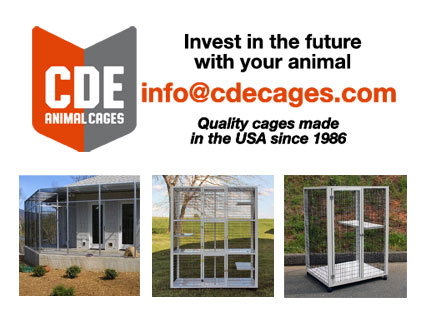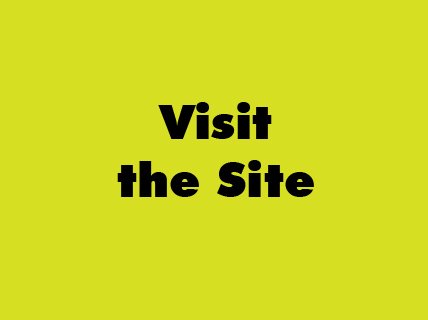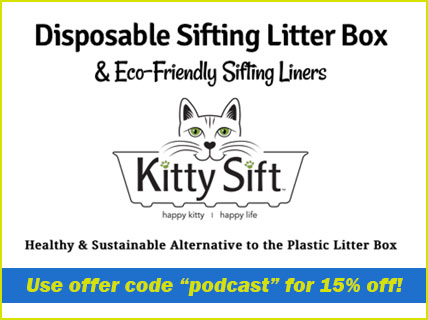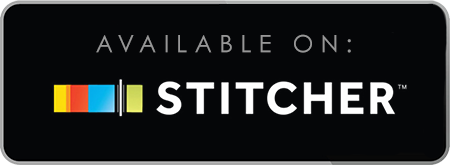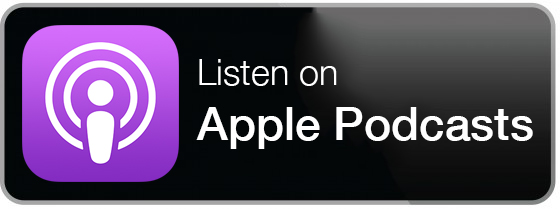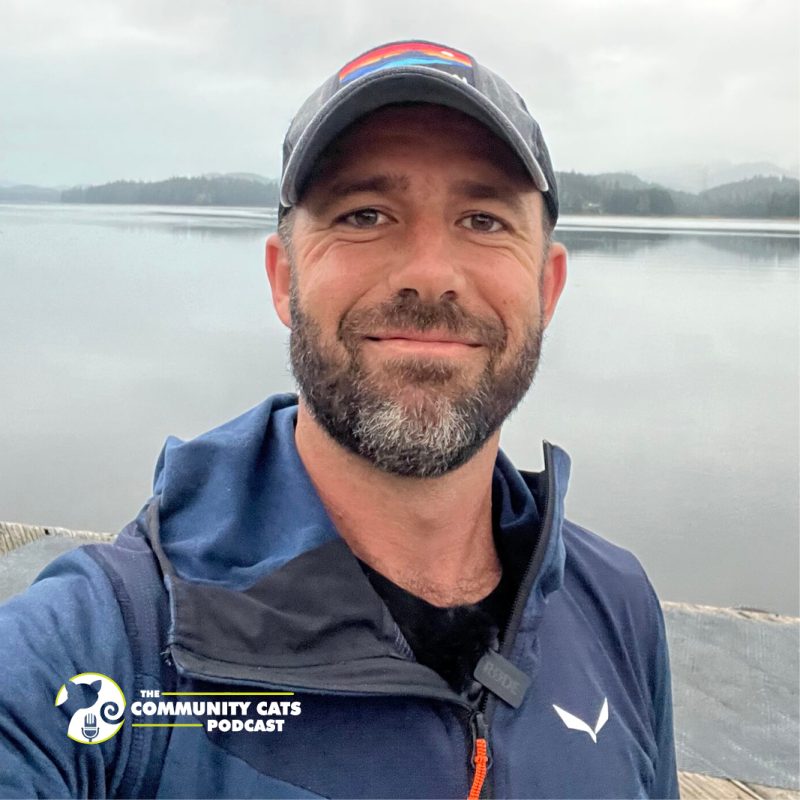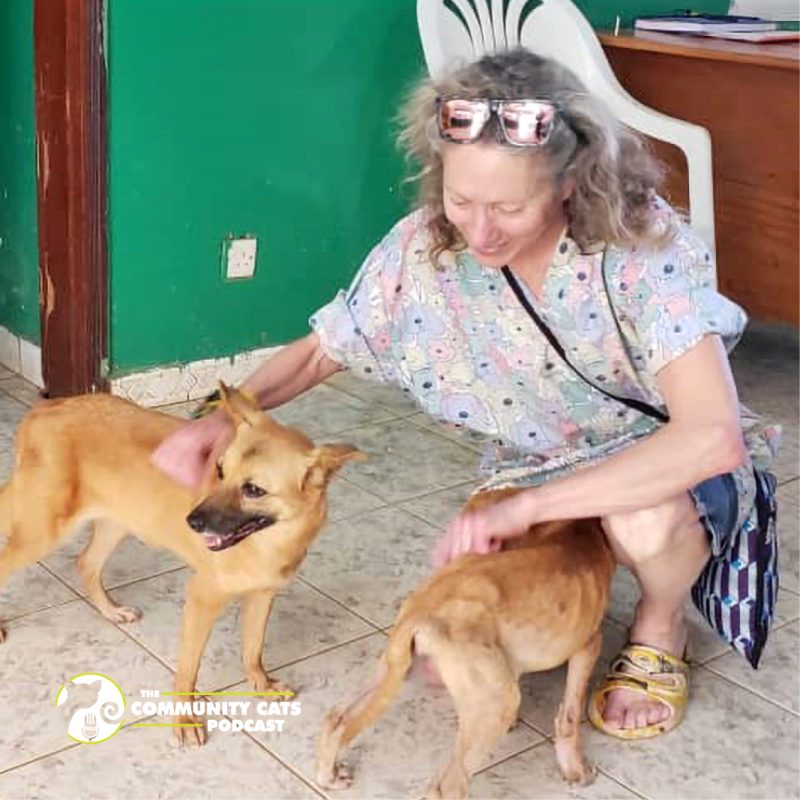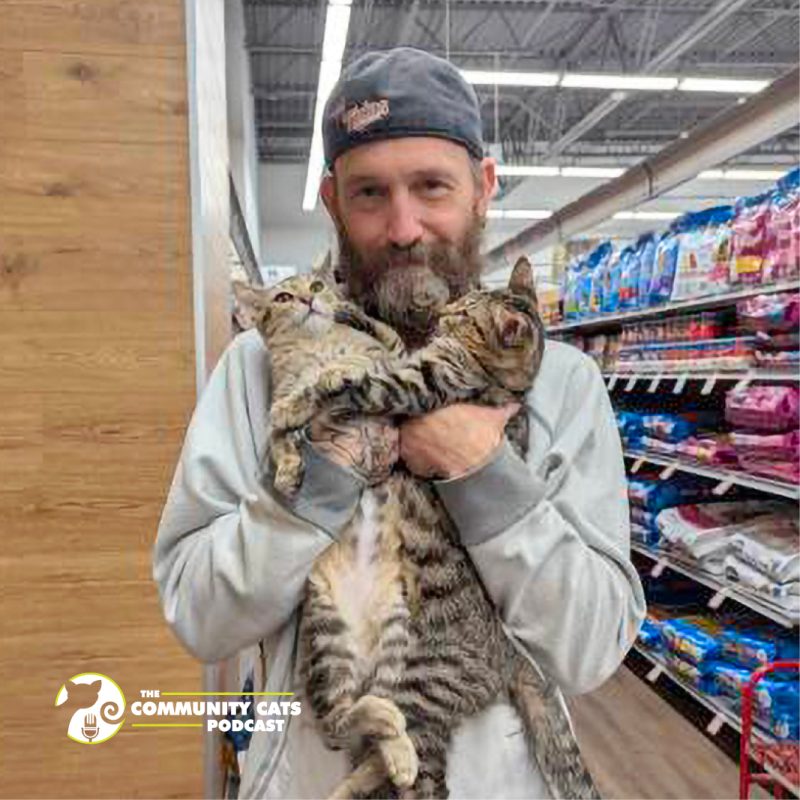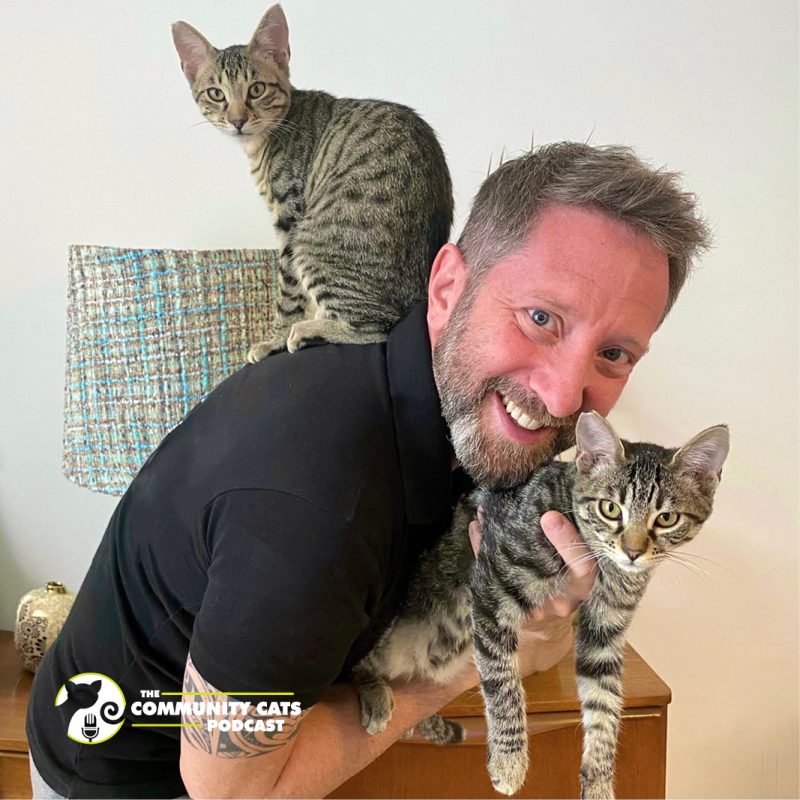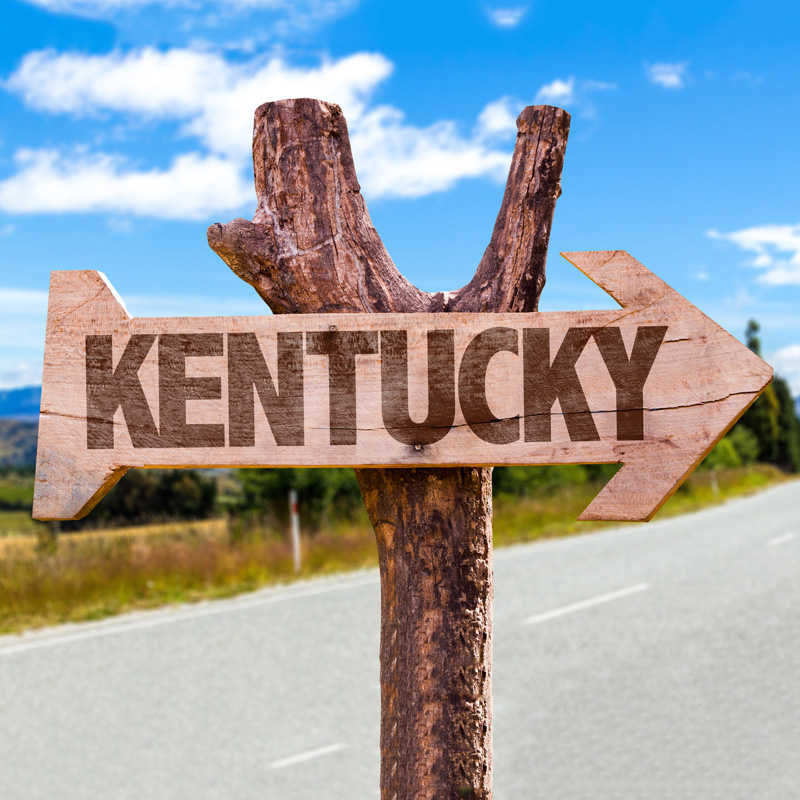
The Bluegrass Cat Project
January 28, 2021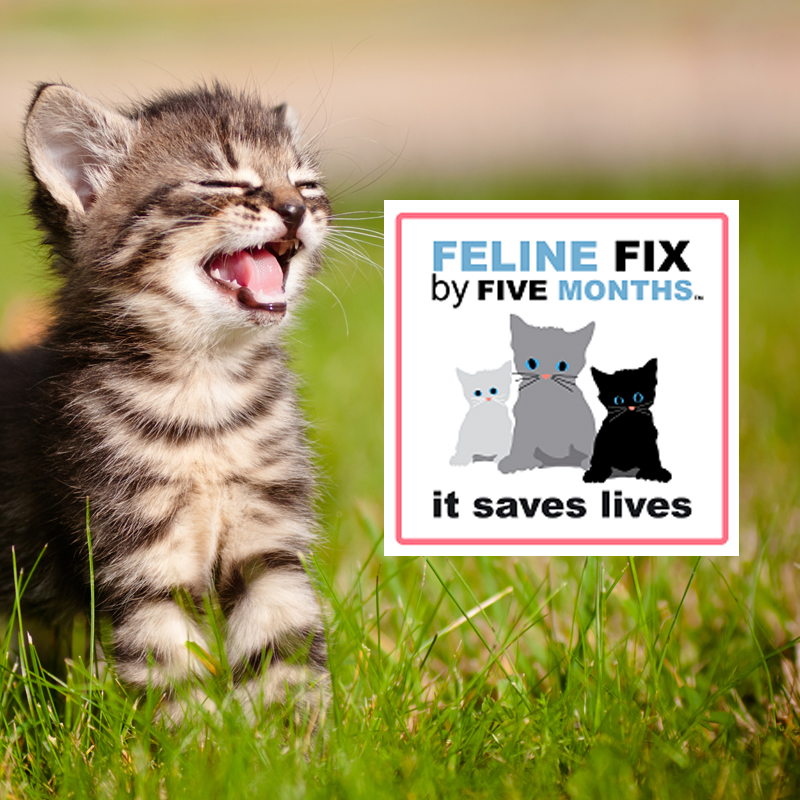
Feline Fix by Five
February 4, 2021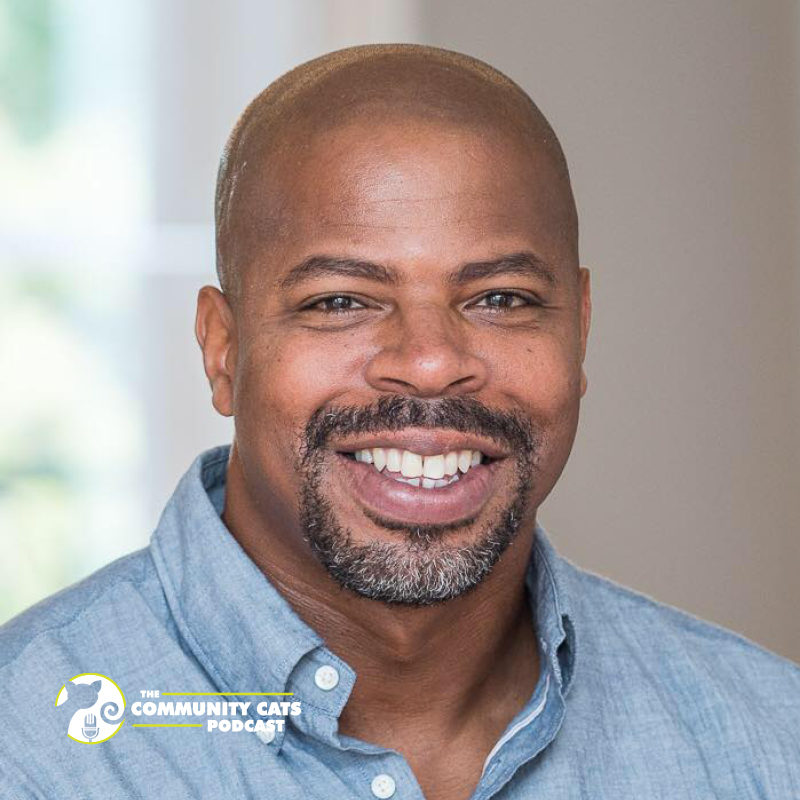
“Diverse audiences always bring, I think, extra things to the table, things that people often don’t think about”
Listen to Episode #389 Now
This episode is sponsored in part by KittySift and Doobert.com.
This week Stacy talks to James Evans, president of CARE and multi-award winning creative strategist and leader with 25+ years of experience connecting organizations with their constituents. He has worked on numerous animal welfare projects including Gulf Spay/Neuter Campaign and HSUS’ Pets for Life, Outdoor Cats Research, Stop Puppy Mills and Spayathon, as well as Best Friends Animal Society’s Outreach Action Team, Maddie’s Fund, and SPCA of Texas’ Let’s Fix This Campaign. Throughout his work, he has always advocated for more diversity and inclusion throughout the field.
James shares how he came to animal welfare organically, marrying his passions for art, mass communications, and animals, and how he discovered animal welfare was an area lacking in services for underserved communities. Stacy and James discuss how to build sustainable community development and what marginalized people bring to the table when they’re included.
CARE, of Companions and Animals for Reform and Equity, is dedicated to saving companion animals through bringing more diversity into the animal welfare industry. CARE hopes to partner with passionate individuals in communities to create CARE Centers, which will help connect people in underserved communities with services from vets and shelters. Ultimately CARE will provide both needed services as well as jobs for communities.
To find out more about CARE, visit their website.
Read Episode #389 Now
Kristen Petrie [00:00:02]
You tuned into the community cats podcast ready? Let's go.
Stacy LeBaron [00:00:13]
Welcome to the Community Cats Podcast. I am your host, Stacy LeBaron. I've been involved helping homeless cats for over 20 years with the Merrimack River Feline Rescue Society. The goal of this podcast is to expose you to amazing people who are improving the lives of cats. I hope these interviews will help you learn how you can turn your passion for cats into action. Today we are speaking with James Evans. James is a multi-award-winning creative strategist and leader with 25-plus years of experience developing relationships between organizations and their constituents. His expertise has been utilized across a diverse group of brands, both not-for-profit and for-profit. Over 15 years of his work within the animal welfare field is well known including the groundbreaking Humane Society's Pets for Life, which helped reshape animal welfare while simultaneously advocating for more diversity and inclusion throughout the field. James has also played an integral part in other animal welfare projects, including HSUS’ Pets for Life, Outdoor Cats Research, Stop Puppy Mills, and Spayathon as well as Best Friends Animal Society Outreach Action Team, Maddie's Fund, Let's Fix This Campaign and PetSmart Charities. In March of 2020, prior to COVID-19 and the unrest surrounding the murder of George Floyd, Ahmaud Arbery and Breonna Taylor, James launched CARE, of Companions and Animals for Reform and Equity to address the need for more inclusion and equity within the animal welfare industry. That said CARE became a beacon for many working within the animal welfare field as the nation faced an undeniable need for systemic change within all facets of American life. CARE’s mission is to address organizational and personal biases within animal welfare to bring diverse voices to animal welfare while also advocating for a more inclusive path to pet adoption to use evidence-based tools, narratives and insights to inspire organizations, to be more inclusive, and less biased all in an effort to save more companion animal lives. James, I'd like to welcome you to the show.
James Evans [00:02:17]
Hi. Good morning.
Stacy [00:02:18]
Yes. And good morning to you, too. And thank you again. First and foremost, I have to ask you this question. How did you become passionate about cats?
James [00:02:29]
I will be honest with you; cats have always been passionate about me. I've always been a dog person. I was walking my dog once, I was probably 10 years old and out of nowhere, a mama cat attacked us. She must have been guarding her kittens under a car or something and that cat ran up my arm, up my back and into my head. I had scratch marks all over the place and I picked up my dog and we just started running. And later. My mom explained that the cat probably had kittens nearby. But ever since then it was almost like I was marked. And since then, cats are incredibly drawn to me. I love animals. I have always loved animals. My parents, if they wanted to keep me quiet, all they had to do was take me to a zoo or sit me in front of Mutual of Omaha. I'm dating myself here. I love them. Cats are fascinating in ways that dogs are not, and I'm a wildlife photographer as well. So, I spend a lot of my time trying to grow up and be more like, companion animals, honestly.
Stacy [00:03:44]
So, your role in animal welfare sounds like you played a significant role in the HSUS as Pets for Life Program, but how did you get there? And then how did you get from there into CARE?
James [00:03:58]
So, that's a great question. I think organically is probably the best way to describe it. I had honestly, no idea animal welfare existed. I come from a very underserved community and really, what that means, I think often when people say underserved or poor or impoverished or destitute or whatever that is. I think too often, we think of criminality when really, we should be thinking about lack of information because that's the predominant obstacle I think of ascending communities like, that is learning that there is another world outside of this sort of desert. I mean, we talked about food deserts, but it's really, I grew up in an information desert. And once I left high school as an art major and then went on to college as an art major and industrial design major that I worked for Cadre of International Design firms going International projects all over the world. I eventually started my own firm in 1999. My first client was the NAACP, and we did campaigns with them and you know, we had some success with those campaigns. And after that we had a Cadre of nonprofits folks that were focused on really removing barriers, many of the same barrios that I grew up with. None of them that I grew up with none of them touched on animal welfare, however, so it was really about anti-smoking cessation, anti-gun violence focused here in Baltimore, foreclosure awareness. Really important things that impact people's lives for the better. So, we were always proud of the work, but one day out of the blue. I got a phone call from someone representing HSUS asking if we would be interested in being involved in a spay and neuter campaign, and we went and we were interviewed, you know, normal standard things, showing our portfolio discussing, you know, the problem at that time, it was the Gulf of Mexico. There were more animals being euthanized in Louisiana, and Mississippi then, any two states in the country. So, we started the Gulf Campaign down there and the Gulf Campaign sort of matured into Pets for Life. But really, once I got into animal welfare, it was like a light bulb had gone off. My whole life being I don't know how to as much curious and in love with animals, at the same time, here I am also incredibly fascinated by the process of art and design and mass communications. And we get this phone call from you know, one of the largest animal welfare organizations in the world and it’s from there, it was a dream come true. It was literally like my two passions mass comm and design met with animals and we really never look back from there and doing so, the Gulf Campaign was a major success as was Pets for Life. We actually initiated it that program designed the toolkit. I personally wrote probably 70% of the toolkit as it stands today and so very involved with it. I think coming from again that resource desert that information desert that I had come from personally. I think my insights into what was needed for Pets for Life was crucial and that was matched with some of the insights, from the sort of expert staff at HSUS, is about what was going on inside of animal welfare. So, you're talking about people like Heather Camisa, Stephanie, Shame, Kenny Lamberti. These people have spent so much time in the field, understanding the nature of what shelters needed. And, whereas I spent so much of my time understanding math, columns in that process. And so, when we put our heads together, Pets for Life was I think a natural result of these sort of brilliant minds. Really thinking about what were the next steps. Unfortunately, Pets for Life is just not enough. Pets for Life is a service-oriented program, which essentially delivers spay and neuter, which is essential, but it's just not enough. And so, as we progress in the animal welfare field, we were constantly asking our animal welfare clients, look we really need to amplify the involvement of people of color in helping to solve the problem and some clients, I think were responsive to that but so few were. But my point is that we would generally encouraging our clients to be a little bit more inclusive than what they would have normally been. So, a lot of the work that we produced almost always had someone of color being amplified within the document within a design document and right. I think it was the last really, this was just before COVID. We did a program for Maddie's Fund called “Breaking Bias” where we essentially went around the country and we interviewed all these amazing people, dog owners, cat owners. It didn't matter but the point was we really wanted to interview a diverse group of people, senior citizens, people without homes, people with disabilities, Latino people, African American people. People that we were noticing too often might be discouraged from adopting or being turned down from adopting and we really wanted to highlight animal welfare, so that this crop of an incredible people that I think animal welfare was marginalizing in one way or another. Maddie's Fund was excited about it. The Humane Society was excited about it. So, we put on this thing called “Breaking Bias”. It was a lot of video interviews and it caught the attention of Spring Point, Life of Riley. And right before George Floyd was killed. Shake that, uh, from Spring Point approached me and said, hey, you know, you guys are really the only group in animal welfare, who are sort of constantly trying to create a diverse conversation around diversity and inclusion through your work. How would you like to start an organization that we would fund? Spring Point would start the funding for, and you guys will be autonomous, and the design of this nonprofit would be focused on bringing more inclusivity to the field. And so, I actually didn't come up with the idea. I was doing the work that we've been doing for years for animal welfare, always being mindful that diverse audiences always bring I think extra things to the table things that people often don't think about. But it was Spring Point Life of Riley, that actually took the initiative and said, what if you guys did this? And we said, okay. And six or seven weeks later, unfortunately, George Floyd was killed, and I think light bulbs went off around the industry and it just so happened that CARE had already been created and we had answers to a lot of the questions. So, it was a perfect storm. Unfortunately buoyed by the unfortunate death of George Floyd.
Stacy [00:11:41]
What a journey. That's amazing!
James [00:11:43]
What a journey.
Stacy [00:11:41]
Yes. Yeah, take a deep breath and go woohoo. Wow, it's incredible. And I think that you touched upon a lot of points in there that are really important in looking at the animal welfare space. And I think you may have seen this which is there is a lot of inward energy in animal welfare. So, we're looking in at our facilities. What are we providing internally? Rather than looking externally at our communities and seeing what we can do to provide support to our community members, as well as to the animals that they care for and tell me if I'm wrong. If I misinterpreted that sort of in your conversation, there.
James [00:12:25]
No, not at all. I think I should say when I say this goes beyond, the problems that we have in this country surrounding race and ethnicity, those are problems. And it when I say go beyond those, it's not as though both things are small. Those things are enormous problems that I think really delay the growth personal growth and national growth of the country. Because if we believe in the false narratives that come with being a person of color, we are missing out on incredible people. I know what my contribution is to this field and I know that I came to it somewhat organically. What I really know is that I'm not the only one, there are many, many brilliant people of color that I think find themselves and suppressed situations. And I think we need to do a lot more about erasing, our sort of false narratives about people and that doesn't just include people of color that includes seniors. It includes people with disabilities. It includes people that may not have traditional homes. You know, when I think your part of a marginalized group, your ear gets sensitized, and your eyes get sensitized to seeing more in people because you recognize that you yourself, end up walking around with false narratives wrapped around you. For instance. I'm 63 220 some odd pounds. I was born with a very athletic physique, so most people think I'm a football player, a boxer and I've literally never played any kind of organized sport never in my life. I've been an artist my entire life. I know, way more about Rembrandt. Then I do about basketball, but no one, no one thinks I'm an artist. No one thinks that I'm passionate about colors and compositions and, and I'm not just passionate about it. I'm actually gifted multi-award-winning inside of this field, but when people look at me, they don't see that. And so, it's also gifted me with the ability to not see people for what they are, sort of cover of the book appearances. So, when I see a senior, I don't necessarily think that person is fragile. When I see someone that is without a home. I don't necessarily think. Oh, that person wouldn't be a good pet companion. So, I think we need to do a better job of turning outward and not ignoring marginalized people because I think we have very special story to tell. And it's not a story of receiving gifts, is not a story of receiving donations. It's a story of learning different ways of survival that we can bring to almost any industry and also help them survive and be a little bit more, I think sensitive to the things that they're doing. That may not, you know, sensitive to problems that they may not have solved that marginalized people may very well be that audience to help solve those problems. So, it really is to me about bringing everyone to the table, middle class, wealthy marginalized. Everyone should be at the table because we all have proximity to pets.
--Start mid-roll advertising--
Stacy [00:15:49]
Say goodbye to scooping. Say hello to a better litter box. Introducing Kitty sift. The eco-friendly waterproof litter box made of recycled cardboard, just lift sift and reuse. See it on Amazon, or go to Kitty, sift.com, and use coupon code podcast for 15% off.
Stacy [00:16:10]
By, now, you know how powerful Doobert Software platform is facilitating everything from transport to fostering with just a few clicks, but did you know that the team at Doobert also provides consulting and custom software development for your organization's needs the team at Doobert, has extensive experience in website design SEO strategies, mobile application, development and even advanced capabilities, involving integration to social media and text messaging big or small. The team at Doobert can do it all and because Doobert operates, as a social enterprise, all of the revenue from their consulting services goes back into developing even more innovative and lifesaving solutions for animal rescues around the world. So, if you are planning to increase your digital presence online through a new website or some SEO strategies, or if your organization is looking for a web development team to support your operations. Look no further than the team at Doobert. Reach out to Chris today at Chris@Doobert.com, and he'd be glad to discuss what you're trying to accomplish and how they can help.
Stacy [00:17:12]
Community cats podcast is excited to announce a brand-new event this year, the online United spay Alliance Conference. United Spay Alliance or USA is a non-profit nationwide source for fordable accessible and timely spay/neuter services, education and policy together with USA, we will be bringing you amazing content on spay/neuter, work starting on Friday, February 26th and running through Sunday, February 28th, 2021. Conference topics include recruiting veterinarians and meeting rural needs, a COVID-19 panel how to start a spay neuter clinic including explanations of the various clinic models, transport models, how to make spay/neuter a priority in your community, grant making for spay/neuter, how to work with animal control, and your board of health and many more. To see the full list of topics and speakers and to learn how you can register visit Community cats. Podcast.com. We're excited about this new offering and we hope you will be too.
--End mid-roll advertising--
Stacy [00:18:13]
One of the things that I have done over the years in several different communities is created community-based organizations, because I feel like it's a lot more than just financial resources. You know, you come in, you bring your mobile spay/neuter clinic. You do a vaccination day. You do a spay neuter day and then you leave. I feel there's a lot more support that the community needs on a day-to-day basis and neighbor to neighbor basis in helping the cats and in my world. It's a focus on cats, but I do include dogs and some of my programs so I try to cross that bridge too but I focus on the cat's the outdoor cats as well as the own cats in the communities, but I don't feel like as a maybe a more regional organization and outside organizations. In my opinion, I don't feel like I should be the lead person. I think that it should be folks from the community whether it's a committee-based organization or whether it's partnering with social service organizations or local churches. You know, I feel that's where the organic growth falls and where the sustainability falls, is that sort of where you are, are leaning. And, and it covers lots of topics and their topics much bigger than we can cover in a 25-minute conversation today, but do you feel that that's a good start for helping us in all of our communities with regards to animals and inclusion and access to services.
James [00:19:42]
Absolutely. I mean, you hit the nail on the head. Essentially, there is no extracting animals from people. For thousands of years, we have found companion animals and companion animals have found us. unlike myself, cats found me somehow. And that's okay. I think what you're describing is what we are planning for. We're planning for what, we're calling CARE centers, which are essentially community focus centers where we want to offer animal welfare to first marginalizing distressed communities. We want to offer animal welfare as workforce development. So, imagine a place like Baltimore, there are lots of distressed communities, like Baltimore. We would like to go to these communities not unlike we did with Pets for Life and do outreach. Find those people that are already passionate about animal welfare, their version of animal welfare and come to them and say, by the way, how would you like to have some help setting up your own 501(c)(3), right? We would as CARE provide legal assistance, helping you set up. We would help you with some initial funding, some technical support, but then you're off on their own and that small organization would be responsible for seven or eight square blocks, where those employed with get to know, their neighbors’ animals intimately. So, that person would also be a buffer between the community and animal control. Would be a liaison between the community and the nearest clinic or shelter or veterinary services. Hopefully low-cost veterinary services. So, we believe that animal welfare is very 30,000 feet up. Shelters are I would say 15,000 feet up but almost nothing is at ground level. And so, there is no real gray area between a family in distress that doesn't understand what the next steps are, what their animal and often that results from that ground zero issue going straight up to 15,000 feet as opposed to someone at a 10-foot level someone at a ground level, really working with families, intimately, not unlike community cat programs, but these will be community members. So that's what we've been talking about and trying to drive funding around is really starting CARE centers where there might be in a vault city like Baltimore might be 10 somewhere, like Camden, New Jersey, then maybe 10 or 12. And so, a CARE center in Camden New Jersey wouldn't look the same as a CARE center in Los Angeles or in a Native American Community. The idea is that the community would own the CARE center and the CARE Center would essentially provide jobs as well, I think there is an enormous amount of money in animal welfare, billions of dollars. I think we need to start spending some of that money and resources on employing people in smaller communities that actually assist their neighbors so that we can sort of stop the stem of animals flowing into shelters in the first place.
Stacy [00:23:24]
I see the sort of neighborhood association model coming out of this in this conversation. And so, obviously, there's a lot of over layering of other social services and I've gotten involved in doing a lot with regards to pet food distribution around the state of Massachusetts into human food pantries that may not have accepted pet food in the past. And now, they're very grateful for pet food because there are seeing the stresses of what's been going on with the unemployment rate and with the Coronavirus and that kind of thing. So, there's a lot of multi layering that goes on but it's local layering. I'm a strong believer of small is beautiful in this kind of cases. The smaller you can get the more targeted you can get like with community cats we focused on targeted trap, neuter, and return programs as being very effective in reducing the cat overpopulation situation for community cats. And I think that being targeted in all those social service layers is going to be tremendously impactful and I believe in this model a hundred percent. I've used components of it in various communities in Massachusetts with great success over the years and continue to work hard to do that also. So, James, I really thank you for sharing with us today. If folks are interested in finding out more about CARE and the work that you're doing, how would they do that?
James [00:24:42]
They would certainly do that at our website. And that's careawo.org and absolutely reach out to us there.
Stacy [00:24:53]
And James. Is there anything else you'd like to share with our listeners today?
James [00:24:57]
So, I just want people to look around them, share information, look at marginalized communities as assets of there's so many people that are passionate like I was as a kid and I can tell you that if someone had come to me in my early years and introduced me to animal welfare, I probably would have become a vet and I meet many young people that say that say the same that they would love to become a vet. You know, I would say just stop, if you see someone that is from a marginalized group and they're handling a pet or have a pet, stop, and have a conversation because I think people in animal welfare that have this expertise, we just need to share it that that rain cloud as 30,000 feet up. We need to squeeze it until everyone on the ground gets wet with all the rich information that we have to share.
Stacy [00:25:57]
James. I want to thank you so much for agreeing to be a guest on my show, and I hope we'll have you on again in the future.
James [00:26:03]
Thank you so much for having us. I wish you the best of luck.
Stacy [00:26:08]
That's it for this week. Please head over to Apple podcasts and leave a review. We love to hear what you think at a five-star review really helps others find the show. You can also join the conversation with listeners, cat caretakers, and me on Facebook, and Instagram. And don't forget to hit follow or subscribe on Spotify, Apple podcasts, Google podcast, YouTube, Stitcher or wherever you listen to podcasts, so you don't miss a single show. Thanks for listening. And thank you for everything that you do to help create a safe and healthy world for cats.

